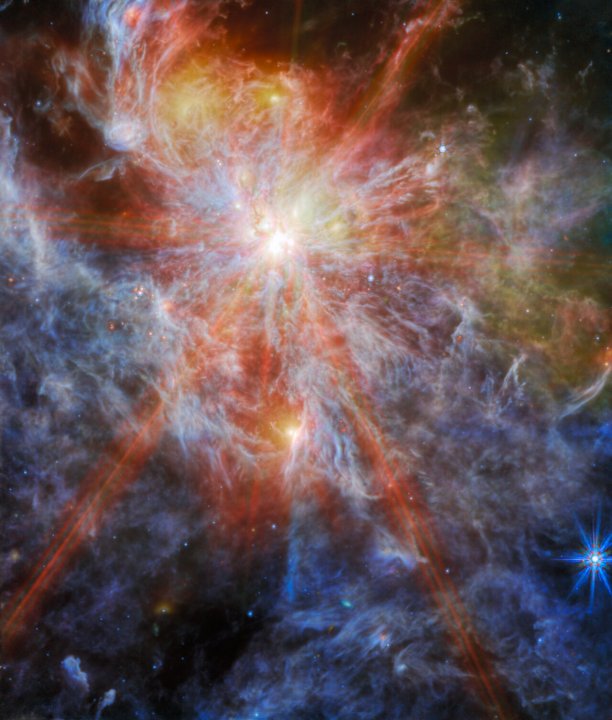A stunning new image from the James Webb Space Telescope shows a star-forming region in the nearby galaxy of the Large Magellanic Cloud. Our Milky Way galaxy has a number of satellite galaxies, which are smaller galaxies gravitationally bound to our own, the largest of which is the Large Magellanic Cloud or LMC.
The image was taken using Webb’s Mid-Infrared Instrument or MIRI, which looks at slightly longer wavelengths than its other three instruments which operate in the near-infrared. That means MIRI is well suited to study things like the warm dust and gas found in this region in a nebula called N79.

Within this nebula are three giant molecular clouds full of ionized hydrogen. This image focuses on one of these areas, called N79 South. Regions like this are full of star formation, and with its rich environment of dust and gas, the LMC hosts several such areas. One of the most famous is the Tarantula Nebula, which, like N79, is also an area full of ionized hydrogen where new stars are being formed.
The LMC also hosts another beautiful phenomenon previously imaged by Webb, the remnant of supernova 1987A. When a massive star exploded, seen in 1987, it threw out layers of material that traveled out into space to create a striking ring structure.
In this image of N79, the light coming from the center of the image has an unusual shape. That’s because of the shape of Webb’s mirror, scientists explain:
“The distinct ‘starburst’ pattern surrounding this bright object is a series of diffraction spikes. All telescopes which use a mirror to collect light, as Webb does, have this form of artifact which arises from the design of the telescope. In Webb’s case, the six largest starburst spikes appear because of the hexagonal symmetry of Webb’s 18 primary mirror segments.
“Patterns like these are only noticeable around very bright, compact objects, where all the light comes from the same place. Most galaxies, even though they appear very small to our eyes, are darker and more spread out than a single star, and therefore do not show this pattern.”
Editors’ Recommendations

